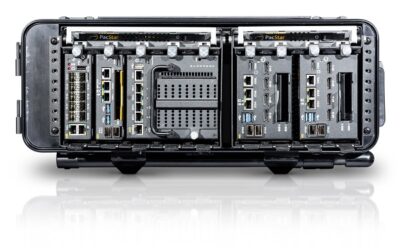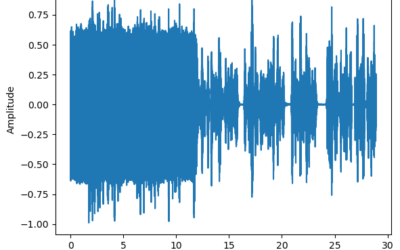Representatives from the international armed forces community, industry and academia warned of ongoing requirements to equip armoured vehicles with technology capable of allowing them to execute hybrid warfare operations, the Future Armoured Vehicles Survivability conference heard yesterday.
Addressing delegates at the event in London on 23 November 2016, officials from across the UK and Israeli Ministries of Defence (MoDs) as well as representatives from original equipment manufacturers, such as Rafael Advanced Defense Systems and General Dynamics European Land Systems (GDELS) highlighted emerging trends across the Contemporary Operating Environment (COE) and addressed suitable technology advances to deal with these issues.
According to event chairman, David Cullen, former Deputy Chief of General Staff at the UK MoD, the British Army for example continues to get to grips with its new ‘Strike’ concept which requires it to be equally capable of countering state and non-state aggressors at home and abroad while also conducting humanitarian aid/disaster relief (HADR) operations as and when required.
Echoing the thoughts of CGS General Sir Nicholas Carter who address the RUSI Land Warfare Conference in London on 28 June 2016, Cullen referred to the COE and associated financial restrictions across the World economy. He warned how the modern battlespace now comprised a diversity of threats with “adaptation” placed at the core if such a concept of operation is expected to succeed in the 21st Century. Key parameters in the COE now include interoperability; a whole force approach including other government agencies; manoeuvre and strike at distance; persistent engagement; and information dominance.
Describing continued importance of manoeuvre warfare, Cullen described how the COE continued to trend towards operations in more urban and complex areas, both of which provide particular complexity for armoured vehicle operations. Such thoughts were repeated by Defence and Science Technology Laboratory Capability Advisor for Mounted Close Combat, Platform Systems Division, Mike Dalzell, who informed delegates how November 2015’s Strategic Defence & Security Review had warned the armed forces not to choose between conventional defences against state-based threats; and requirement to counter threats that do not recognise national borders.
“Today we face both and must respond to both,” Dalzell quoted from the SDSR itself while highlighting ongoing returns to divisional operations optimised for high intensity combat operations based around the AJAX and Mechnanised Infantry Vehicle (MIV) concepts. Highlighting the emergence of asymmetric warfare during recent campaigns in Iraq and Afghanistan, Dalzell referred to ongoing requirements to counter rocket propelled grenades in a 360-degree urban battlespace as well as the improvised explosive device (IED) threat which has become more intense.
“Lebanon in 2006 provided us a first glimpse of something different,” Dalzell warned while referring to Israel Defense Force (IDF) operations against Hezbollah, the latter of which started to fight in a very “state-like” manor with anti-tank guided munitions. “The future is not exactly as we said it might be,” Dalzell warned while referring to long range ATGMs destroying Syrian Army T-72 main battle tanks at ranges between two and three kilometres; while in Ukraine, tank-on-tank warfare is not over.
“There are still small numbers of MBTs engaging each other in eastern Ukraine,” he warned. Similar sentiments were described by the Israeli MoD’s Head of the Future Combat Vehicle Development Team, Didi Ben Yoash, who proclaimed ongoing desires to balance mobility, firepower and survivability. Also referring to the Lebanon conflict of 2006, Yoash described it as the “final wake-up call” for the IDF in regards to requirements for Active Protection Systems.
“The main lesson learned was the validity of the MBT as the only platform that could operate in an anti-tank saturated battlefield environment, although protected armoured personnel carriers were used alongside MBTs it necessary,” he explained while describing how all MBT and APCs will be equipped with Rafael’s TROPHY APS moving forward. Also highlighting lessons from the 2014 Gaza conflict which also saw the proliferation of ATGMs in simultaneous and multiple scenarios throughout a short range, urban environment, Yoash referred to a “New Strategic Environment” which continues to change.
“MBTs are here to stay but is ratio balance of MBTs to AFVs still balanced or is the current operational situation changing this much?” he asked. According to Yoash, current requirements continue to centre around countering ATGMs and IEDs as well as engaging the enemy at long range as well as complex urban environments. “We need a family of AFVs to meet the operational requirements of the Brigade Combat Team through advanced, smaller and lighter platforms which are easy to operate and maintain,” he demanded while presenting the MoD’s vision to provide an overmatch capability to the IDF Ground Forces to enable “decisive victory in all engagements by quantum leap in manoeuvre over the entire spectrum of operations.”
The MoD is now working with IAI, Rafael and Elbit Systems to develop the CARMEL AFV- a 35-ton medium weight AFV- with phase one comprising a feasibility study due to culminate in 2019. The concept is based around a two-man crew solution providing a lighter weight with advanced survivability due to a better protected and smaller cockpit and APS; balanced fire power for close and urban terrain; and increased mobility with hybrid electric drive. The CARMEL family of vehicles is also expected to feature transparent armour; voice and touch activation systems; and decision support technology. Platforms are expected to be armed with rocket launchers as well as a cannon measuring somewhere between 40mm and 76mm calibre.
However, Yoash warned: “There are no 100 per cent solutions. The only way to move forward is to adopt 80 per cent solutions and improve by combat lessons learned. APS solves major parts of the problem for heavy fleets while increasing fighters’ confidence in their vehicles and increasing force protection so they should be widely adopted.”
Finally, Head of Heavy Platforms at GDELS, Michael Bieniek informed the conference how the contemporary threat now comprised explosively formed projectiles (EFPs), RPGs, bomblets, fragmentation and kinetic energy from multiple angles. Referring to weight, cost and dimension trade-offs, Bieniek described how weight budgets remained the most critical aspect of vehicle design.
“So we can either increase payloads; use the latest generation of armour types; use scenari-based training to assess threats; or develop optimised baseline designs instead of protection as a pure add-on,” he continued. “Modularity is required and we need to be prepared for the unknown,” Bieniek added while demanding greater space to allow for the integration of technology to counter future threats; as well as use of polyvalent solutions and more holistic concepts. Finally, he called more greater utility of simulation processes to optimise equipment integration on board armoured vehicles. “Mine protection doesn’t end with a stiff hull or good seats. All systems need to fulfil the protection requirements to guarantee survivability of soldiers,” he concluded.
Andrew White

























